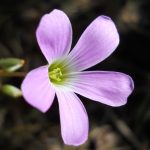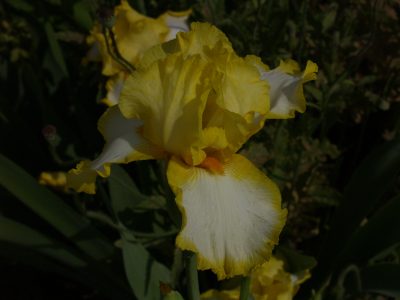Why don’t my bearded iris bloom? When should I divide them?
Lack of sun, nutrient deficiency, or rhizome rot could be the problem. But, most likely they are just too crowded. Dividing your bearded irises in September will improve their blooming next spring.
Dig them up with a spade or a shovel and cut off the mother rhizome, which will never bloom again. This will be the biggest one and most likely doesn’t look too good. With a knife, cut away the new side rhizomes with their leaves.
Discard any rhizomes that are mushy or have holes in them (a sign of borers).
Dig a hole and make a little mound. Spread the roots over the mound and cover with soil. You want to anchor the rhizome but you don’t want to completely cover its top. If you have several to do and it’s a hot day (or you need to keep them overnight), keep the roots moist with a damp newspaper or paper towel until you’re ready to replant.
If the iris doesn’t appear to be overgrown (you’ve divided with 3-4 years), but has yellow foliage, go ahead and fertilize with a high phosphorous fertilizer. Nitrogen-PHOSPHORUS-Potassium.
Nitrogen encourages green growth, so lowering the amount of nitrogen will encourage the plant to focus most of its energy on producing flowers instead of leaves.
One other possibility is that your iris may not be getting enough sun. If that’s the case, simply dig it up and move it to a sunnier spot.
Watch Trisha’s video on how to divide your bearded iris.

 Lauren Springer Ogden and Scott Ogden
Lauren Springer Ogden and Scott Ogden Chris Wiesinger’s Plant List
Chris Wiesinger’s Plant List Daphne Richards
Daphne Richards
 Trisha Shirey
Trisha Shirey